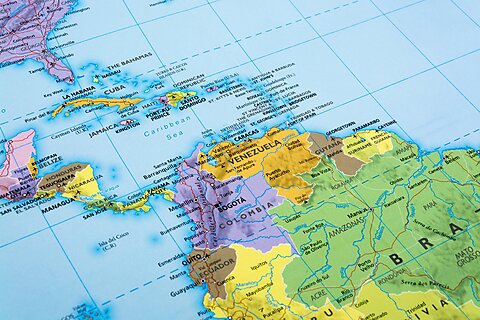Justin Logan and Lawrence Montreuil
The Trump Administration announced last week that the USS Gerald Ford and her Carrier Strike Group, consisting of three Arleigh Burke-Class Guided-Missile Destroyers, would be redirected from the Mediterranean Sea to the US Southern Command. They will join a sizeable naval contingent already in the Caribbean that has conducted a growing number of strikes against suspected drug boats in an effort to “degrade and dismantle” cartels that the administration designated as foreign terrorist organizations earlier this year.
The introduction of a Carrier Strike Group brings with it questions about the intent of the operations in the Caribbean, particularly as tensions with President Nicolás Maduro rise and the Trump administration publicly flirts with the idea of striking targets inside Venezuela. The Miami Herald has reported that strikes inside the Latin American country could come “in a matter of days or even hours.”
The size and composition of the force assembled are not optimized for traditional counter-narcotics operations but rather for a sustained air and naval campaign. In fact, the number of naval assets in the Caribbean now exceeds those that were assembled off the coast of Libya in 2011 for Operation Odyssey Dawn, an aggressive bombardment campaign that ultimately led to the collapse of the Gaddafi regime.
Calls for US military action against the cartels have evolved in some circles into a push for regime change in Venezuela, and the US has assembled the force to do it. If Trump pulls the trigger on a “Libya model” intervention, it would risk repeating a disastrous foreign policy mistake that resulted in civil war, a refugee crisis, and regional instability.
The Libya Model and Its Lessons
In March 2011, the United States and its NATO allies launched airstrikes in Libya under the banner of humanitarian intervention with the backing of United Nations Security Council Resolution 1973. The stated mission was to prevent mass atrocities by Muammar Gaddafi’s forces. Within months, however, the campaign morphed into an operation aimed at toppling the regime.
The naval buildup in the Caribbean is reminiscent of the one in the Mediterranean in the days leading up to Operation Odyssey Dawn. In fact, with the addition of a Carrier Strike Group and access to bases in the continental US, it is exceptionally more capable. While this demonstration of force may be just that, the risk of escalation by some unforeseen incident or mission creep, as we saw in Libya, is not hard to imagine. The lesson policymakers should learn from Libya is not the swiftness with which the US military can reduce a third-rate force into rubble, but the negative externalities that are likely to follow.
The Libya model for regime change avoided the commitment of ground troops by relying on air and naval assets to provide indirect support for anti-Gaddafi forces. The initial phase of the six-month intervention, known as Operation Odyssey Dawn, involved hundreds of air sorties and Tomahawk strikes from US and allied vessels.
Gaddafi was killed approximately six months later, and the United States declared success. Yet Libya soon descended into chaos, and the country fractured into rival militias and fiefdoms. Extremist groups, including ISIS affiliates, took root, and weapons from Libya spread across North Africa, fueling instability throughout the region. The collapse of Libyan governance turned the Mediterranean into a corridor for human trafficking and mass migration that European countries are still contending with today. Far from being a model worth replicating, Libya has become yet another cautionary tale about the unintended consequences of forcible regime change by external actors.
Venezuela Is Not Libya, But the Risks Are Similar
Venezuela today presents many of the same temptations and dangers that Libya did in 2011. Its authoritarian leadership is entrenched, its economy is in shambles, and its people are suffering under repression and scarcity. But a military intervention would not solve these problems, nor would it stem the tide of fentanyl arriving in the US. It would, however, almost certainly make them worse.
The Venezuelan armed forces remain loyal to Nicolás Maduro, and a US intervention would likely inflame Venezuelan nationalism, ignite a protracted internal conflict, invite proxy involvement from Russia or China, and destabilize neighboring states already burdened by refugee flows. The only organizations that would benefit more from a violent internal struggle than the military would be the cartels.
The resulting humanitarian crisis would undoubtedly lead to calls from some for further US involvement. Proponents would argue that ground troops are required to deliver humanitarian aid, restore essential life support functions, or that there is a responsibility to protect the populace from war crimes committed by the Venezuelan military. This is the well-trodden slippery slope of foreign interventions.
Operation Odyssey Dawn and the chaos that ensued in Libya stand as powerful reminders that even “limited” interventions can quickly metastasize into catastrophe. A Venezuelan uprising against Maduro would mark a triumph for human freedom, but we shouldn’t use the US military as a tool of their revolution. The United States should resist the urge to repeat history’s mistakes.

